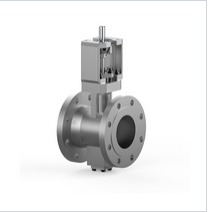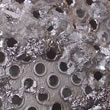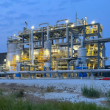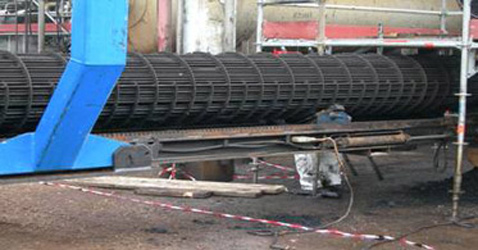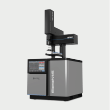Feb-2023
Reactor runaways - automatic or manual depressuring?
Recently, I have had several discussions and inquiries regarding reactor runaway events and whether automatic depressuring systems are needed for hydroprocessing units.
Jeff Johns
Becht
Viewed : 2386
Article Summary
Short answer:
• ALL hydrocrackers should have an automatic depressuring system
• Other units that use catalysts with high activation energy should consider an automatic depressuring system (these catalysts have zeolites in some form, such as catalytic dewaxing)
• Hydrotreaters generally DO NOT need automatic depressuring systems but should have manually activated emergency depressuring systemsTemperature excursion and runaway basics
Since hydroprocessing reactions are exothermic, a temperature excursion can occur when heat is not removed as fast as it is created in the reactor. A temperature increase of 15°F (8°C) indicates that something significant is happening in a reactor that requires attention before the excursion turns into a runaway reaction. One of the reasons that we use 15°F as a key number, is that it takes an increase of about 15°F to double the hydrocracking reaction rate when zeolite catalysts are employed (see Table 1). At any rate, an increase in reactor temperatures of 15°F is significant in any hydroprocessing unit.
For this discussion, we’ll use the following definitions:
Temperature excursion: an unexpected increase in temperature of 15°F (8°C) or more (or temperatures have increased beyond the safe reactor operating temperature)
Reactor runaway: Temperatures in the reactor are increasing out of control and immediate action is required.
A temperature excursion that causes reactor temperatures to approach 850°F (450°C) can be especially hazardous. At about 850°F, thermal cracking starts to occur in any reactor where hydrocarbon molecules crack to completion forming methane. Thermal cracking releases 10-15 times the heat of normal hydrocracking reactions, so the reactor temperature rise will quickly accelerate. Once thermal cracking starts, reactor temperature increases can easily reach 100-300°F per minute (55-170°C/minute). In the TOSCO reactor runaway incident cited previously in this blog, the reactor progresses from a high temperature alarm to rupture of the outlet pipe in seven and a half minutes.
A few additional notes
• Thermal cracking in coker and FCC units is endothermic – why is thermal hydrocracking in a hydroprocessing unit highly exothermic? The difference is hydrogenation. After thermal cracking occurs in a hydroprocessing unit, the molecule fragments are hydrogenated, which releases substantial heat.
• Thermal cracking can occur in any type of hydroprocessing unit, even hydrotreaters. In fact, you don’t even need catalyst for thermal cracking to occur.
• In some processes, like the second stage of a hydrocracker, thermal cracking will occur at temperatures as low as 725°F (385°C).
Stopping runaway reactions
The cause of the substantial heat release (hydrogenation) gives us a clue on how to stop an excursion or runaway.
We’ll use the fire triangle shown in Figure 1 as an analogy – if we remove one leg of the triangle, the reaction will stop. Obviously, removing hydrogen is the only feasible leg of the ‘excursion triangle’ that can be easily and quickly removed.
Depressuring systems
Because of the difference in activation energy listed in Table 1, hydrocrackers runaway and hydrotreaters walk away. Hydrocrackers also operate at higher temperatures and closer to thermal cracking initiation temperatures than hydrotreaters.
Because a hydrocracker runaway event can quickly turn into a loss of containment on the reactor outlet pipe, hydrocrackers must have automatic depressuring systems where depressuring is activated by any one of the following conditions:
• High reactor temperature
• High reactor outlet pipe temperature
• Loss of recycle gas flow to the reactor
The risk of a runaway turning into a loss of containment is substantially less for hydrotreaters, therefore, manual activation of the depressuring system is adequate with alarms to alert operators of the conditions listed above. All hydrotreaters must have manually activated emergency depressuring systems so the pressure can be quickly reduced in case of fire, leak, or temperature excursion. API 541 requires an emergency depressuring system in all hydroprocessing units with the capacity to reduce the pressure to 50% of normal pressure within 15 minutes.
The ‘in-between’ units like catalytic dewaxing units should evaluate the risk associated with each unit and consider if an automatic depressuring system is required or if a manual system is sufficient. It should be noted that many companies have added automatic depressuring systems to catalytic dewaxing units and other units that use a zeolite catalyst with moderate activation energies.
Why hydrocrackers require autodepressuring
Decades of history and incidents with hydrocrackers tells us that manual depressuring was not always activated quickly enough to be effective. The industry defining incident was the TOSCO hydrocracker runaway. The report for this incident can be found online by searching:
• United States Environmental Protection Agency Chemical Accident Investigation Report – TOSCO Avon Refinery Martinez California, EPA-550-R-98-0094, November 1998
In the TOSCO incident, the unit was not depressured. Unfortunately, failure to depressure or failure to depressure quickly enough is a common problem especially for hydrocrackers that can quickly runaway. Therefore, autodepressuring systems have become a worldwide standard for all hydrocrackers to make sure depressuring will take place before loss of containment occurs.
Summary – which units require automatic depressuring systems?
• Hydrocrackers – YES
• Hydrotreaters – No (but must have a manually activated depressuring system)
• In-between units like catalytic dewaxing units – maybe (probably, yes, if zeolite catalyst is used)
Sponsor:
Add your rating:
Current Rating: 4










